Utilising high quality soy protein for piglets
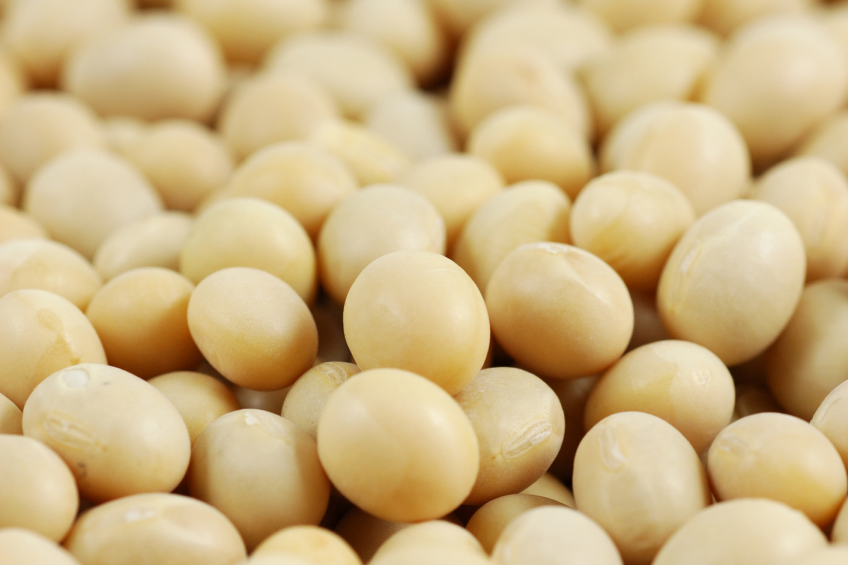
Young animals like piglets need special care in feeding especially considering the dietary changes they need to endure. One ingredient which has the potential to offer a smooth transition in feeding is soybean meal. Here, an outlook of soy protein utilisation in piglet diets.
At the weaning stage, piglets need to cope with the change from suckling milk to eating solid feeds while their digestive system is not fully developed. This is also the reason why piglets are very sensitive to anti-nutritional factors (ANFs) in feed ingredients. Piglets can easily get stressed, suffer from a reduce feed intake, have a decreased growth performance and diarrhoea. Providing highly digestible and high quality feed becomes a ‘must’ to support piglets to overcome this difficult transition.
Traditionally, soybean meal was not ranked as a ‘safe’ feed for piglets due to its high content of ANFs. Such ANFs include a trypsin inhibitor which is heat labile and can be destroyed by heat. This inactivates protein-degrading enzymes and reduces protein digestion, which of course results in lower growth performance. Furthermore, antigens are large molecular proteins that escape digestion and become immunogenic in piglets and soy oligosaccharides cause gas production (flatulence) and diarrhoea in piglets.
Potential of the soybean
Soybean however, is the most available vegetable protein source (284 million tonnes produced in 2015) with a balanced amino acid profile and good digestibility. This fact attracts the interest of many researchers to transform soy protein into an alternative protein to replace expensive protein sources like fishmeal, skim milk powder and potato protein in diets for piglets. Several processes are involved in removing ANFs in soybean, and eventuate in the three main soy protein product ranges that have more than 50% crude protein (CP) content: fermented soy, enzyme-treated soy and soy protein concentrate. Thanks to this, soy protein has its own position in piglet diets; however, this can also confuse farmers who are on the quest to find a high quality soy protein for piglets.
Fermented soy
Historically, the process of fermented soy originated from the production of tofu, soya sauce and soybean paste in Asia. Fermented soy is made from the fermentation of soybean meal by fungal and bacterial strains such as Aspergillus oryzae and Lactobacillus subtilis. The fermentation process is supposed to reduce or even eliminate the ANFs in soybean, and the final product would be more digestible and have a better nutritive value compared to conventional soybean. Indeed, the level of trypsin inhibitor, antigens and soy oligosaccharides has been found to be much lower in fermented soy compared with conventional soybean. Fermented soy is ranked in second place in terms of low ANFs among other soy products, just after soy protein concentrate. However, one problem with fermented soy is that during the fermentation process, microbes convert soy protein and amino acids into their own protein profile.
Enzyme-treated soy
As the name suggests, enzyme-treated soy is a soy protein that is treated by enzymes (mostly a mixture of enzymes) to remove ANFs in soybean. Enzyme-treated soy is often being classified in the same group with fermented soy, which gives the wrong impression that the nutritive value of these 2 is the same. Using just the enzyme to remove ANFs, will not interfere with the protein and amino acid profile of soy, and will also guarantee that the quality of enzyme-treated soy between each batch is much more stable in comparison with fermented soy. For example, Danish manufacturer Agro Korn has produced AlphaSoy 530 from well-selected soybean meal, and gone through the strictly-controlled high thermal short time process (extrusion) with the fortification of enzymes to reduce ANFs and disrupt the complex structure of the seed matrix. The final product is then a gentle and balanced protein source (53% protein) that is highly digestible, suitable and very safe for the piglet’s digestive system.
Soy protein concentrate
Soy protein concentrate is ranked as a premium soy protein source with a higher price tag than fermented soy and enzyme-treated soy. To achieve this high level of crude protein, the production of soy protein concentrate removes all the water- or alcohol-soluble non-protein components, and even the soluble carbohydrates through the extraction of dehulled and defatted soybean meal. This extraction process also removes most of the ANFs, especially oligosaccharides.
Utilisation of soy protein in piglets
Among soy products, enzyme–treated soy and soy protein concentrate have higher metabolisable energy values than soybean meal. The Danish enzyme-treated soy product mentioned earlier (3937 kcal/kg) is also far superior in terms of ME value compared to fermented soy (3305–3635 kcal/kg). This is because of the extrusion process, and the enzyme treatment of the product that disrupt the rigid structure of the seed matrix and transform the fibre part as well as oligosaccharides to a more digestible form and consequently provide more energy to the animals. However, in fermented soy, microbes may consume all starch, sugar (sucrose) and oligosaccharides and even partly protein of soybean meal as energy sources for their growth during fermentation. This may explain why a lower ME value in fermented soy compared to soybean meal fed to weanling pigs has been observed (Rojas and Stein, 2014). In case of soy protein concentrate, its high crude protein content also contributes to the diets as an energy source.
Figure 1 – Metabolisable energy of various soy protein vs. soybean meal (Danish Pig Research Centre, 2014).

In terms of growth performance, a study in weanling pigs proved that enzyme-treated soy is an outstanding protein source that can replace fishmeal completely while keeping up the increase in weight gain and an efficient feed conversion ratio (Figure 1) as well as good gastrointestinal health (Sørensen and Nørgaard, 2016). The positive effect of enzyme-treated soy on growth performance and diarrhoea after weaning is rather consistent in piglets in many studies; however, it is not the same in the case of fermented soy and soy protein concentrate. A new study of Harper Adams University observed that using 10% of enzyme-treated soy in the diets for weaned pigs led to the highest daily weight gain compared to other soy products while the lowest one was in pigs fed soy protein concentrate (Figure 2). As the results suggest, the higher benefit margin over feed by €1-2 per pig was achieved in enzyme-treated soy compared with other soy products.
Figure 2 – Gain:Feed in newly weaned pigs fed enzyme-treated soy* vs. fishmeal (Sørensen and Nørgaard, 2016).

Further studies are required to clarify the effect of various soy products on growth performance and gut health in piglets. Enzyme-treated soy, however, seems to be an alternative protein source that is the most consistent in quality and most economical when replacing conventional high protein sources.
Join 18,000+ subscribers
Subscribe to our newsletter to stay updated about all the need-to-know content in the pigsector, three times a week. Beheer
Beheer

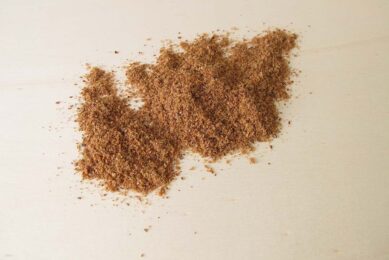
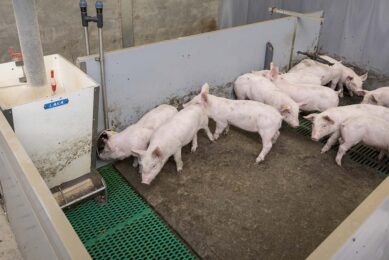
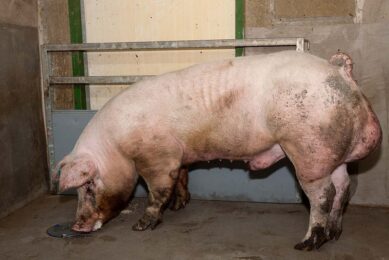
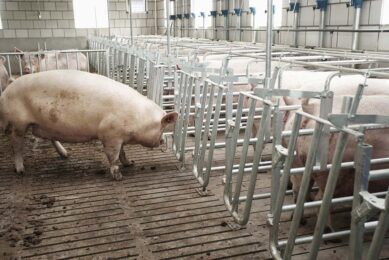





 WP Admin
WP Admin  Bewerk bericht
Bewerk bericht